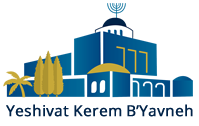One Who Converts is Compared to a Newborn Child
By: Adir Posi
Yerushalayim, Israel
The Shulchan Aruch (Even Haezer 1:7) paskens based on the Rambam (Ishut 15:6) that if a gentile were to convert to Judaism together his children, he would fulfill his obligation of "pirya v'rivya" (procreation). However, were the same thing to happen with a slave who was freed with his children, he would need to have children again to fulfill the mitzva. The Beit Shmuel asks, why we don't apply the principle of "ger shenitgayer kekatan hanolad dami" (one who converts is compared to a newborn child) to the first halacha and require him to have more children, given that his halachic existence begins anew at the time of his conversion? The Minchat Chinuch (Mitzva 1) answers that the nature of the mitzva of pirya v'rivya is that one should have children not mattering when they were born. This is similar to the idea of "shevet" as explained later.
The Beit Shmuel, however, answers that since they were halachically considered part of his lineage while he was still a gentile he is considered as coming into the Jewish fold with children. The Turei Even (Rosh Hashana 27) expounds at some length on this Beit Shmuel. He explains that although we generally do not find that one can fulfill an obligation at a time that he himself is exempt from the mitzva, this case is different. This is because when he had children he accomplished the idea of "shevet" ]based on the pasuk, "Lo tohu bra'ah lashevet y'tzarah" -- "[G-d] did not create the world for emptiness; He fashioned it to be inhabited" (Yeshaya 45:18)[, meaning that there is positive value in inhabiting the world. Thus, since these two obligations, though separate (as seen in Tosfot Yevamot 62b), are discharged with one action, doing one can fulfill the other. In this piece, we will try to shed light on the Beit Shmuel's answer in a different way by explaining the concept of "ger shenitgayer."
The Rambam (Avel 2:3) paskens that if one were to convert together with his children they would not be required to mourn for each other. This halacha would seem to imply that since one who converts is compared to a newborn child, the father and son are not considered related to each other in regards to hilchot aveilut. We see this concept further when the Rambam writes (Isurei Biah 14:1) that because of the principle of ger shenitgayer, any blood relation that he had while he was a gentile is no longer related to him, and therefore, relations between the two of them would not be considered incest mideoraita. We must understand how the gentile's children are considered his for fulfillment of piryah v'rivyah but not for aveilut or laws of incest? On the one hand, ger shenitgayer seems to say that the convert erases his past, yet we see that in certain halachot his past seems to be connected to him!
There is an interesting idea posed in Shu"t Achiezer (vol. II, 29:6) that we do not say the concept of ger shenitgayer in halachot regarding the mother. What is the source of the Achiezer? Another question that needs to be addressed is what exactly is the meaning of the comparison to a "newborn child?"
In order to understand this issue, it is necessary to delve into the source of this idea that a convert is considered a newborn child. One of the commonly accepted approaches is that of the Meshech Chochma. There are certain marriages that are permissible for Bnei Noach and prohibited for Jews. He says that one can assume that before Har Sinai some of these marriages took place, and the pasuk says, "shuvu lachem l'ohaleichem" (return to your homes). This shows that the people that were considered related to them before Matan Torah were no longer considered their relatives afterwards. Thus, one who converts is compared to a newborn child.
What we see from this answer is that throughout world history there were two different types of relationships. These two relationships can be accurately described as "goy" and "umah," i.e., nation and nationality. [See Eetz Hatzvi by Rav Hershel Schachter for further elaboration.]. The relationships between gentiles (and between Jews before Har Sinai) were those of a "goy" and not of an "umah." The Jewish people themselves went through the process of changing from one to the other at Ma'amad Har Sinai. Not only this, but also the mitzvot given subsequently were given to a different type of people.
Thus, piryah v'rivya, which was commanded before Har Sinai, remains the same mitzva (one that was commanded to a "goy") and a gentile who had this relationship of father and son before will be considered having fulfilled it. However, the halachot of aveilut and arayot were only given to the umah, and when one converts and joins this umah, the principle of ger shenitgayer says that he no longer has the relations of a goy. This is the true meaning of the comparison to a child. When one converts, he assumes an entirely new identity that totally erases his past in as much as it redefines all of his relationships within the context of the new family that he has joined.
[One more possibile source is the one raised by the Chatam Sofer in Avoda Zara (63b s.v. akilu) that the halacha that a ger is m'tamei b'ohel proves that a ger has no family and thus starts his life anew after his conversion, since until now he was not called "adam" and now he is. However, this approach is problematic because this would only work according to the opinion that a gentile is not m'tamei b'ohel.]
Shiur ID: 4000
Do you have a comment or question on the shiur?
Comment below and we'll join the discussion
Add your comments:


.jpg)
